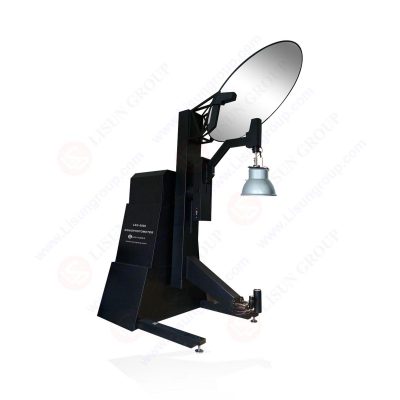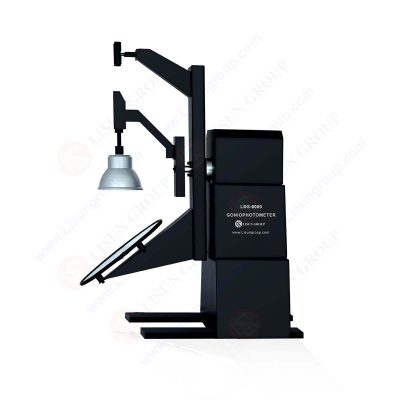Goniophotometers are tools used for evaluating the luminous flux, otherwise also known as the brightness of various types of equipment. An LM-79 LM moving detector goniophotometer collects photometric data from different spherical locations. It then aids in ensuring the quality of the goods to be sold. It also supports the seller’s or the manufacturer’s standing in the market. The device’s primary use is to measure the luminous flux of focused light sources.
These include LEDs, lamps, and automobile headlights. The photometric measurements made in this instance and the part played by the available manufacturers are crucial. This article will discuss what the type C goniophotometer is, its use, and its functionality in addition to briefly discussing LISUN as one of the best producers of goniophotometers.
LM-79 Moving Detector Goniophotometer | Mirror Type C | LSG-6000
In complete compliance with LM-79-19, IES LM-80-08, commission delegated regulation (EU) 2019/2015, CIE-121, CIE S025, SASO 2902, IS16106, and EN13032-1 clause 6.1.1.3 type 4 requirements is provided by the LISUN LSG-6000 Moving Detector Goniophotometer (Mirror Type C). The LSG-6000 is a 3D curve testing system. It is use for testing automatic light distribution intensity that complies with Clause 7.3.1 of the LM-79-19 standard and is the most recent improved version of the LSG-5000 and LSG-3000. The measuring range is 5 to 30 meters.

Goniophotometers LSG-6000
Gonio photometry refers to the process of measuring the angular distribution of light. The term “goniophotometer” refers to a photometric tool that combines a photometer and a goniometric motion stage to measure the light emitted by an object at various angles. Hence in very simple words, it is a device used for led measurement.
It is commonly known that LISUN produces many goniophotometer models in line with CIE, IEC, and other local, national, and worldwide standards.
A type C goniophotometer is an optical tool used to gauge the amount of light present at various locations throughout a single area. It is used to gauge the power and effectiveness of various forms of light resources by testing their operation and brightness. The goniophotometer is typically utilized in locations with a single light source. The strength and intensity of the unidirectional light source are measured by a goniophotometer. Both the temperature and the consistency of the color in the scattered light are tested using it.
Taking into account everything discussed above, the goniophotometer’s uses can be summed up as follows:
Compared to other goniophotometers kinds, the C-type is unique. Moving Detector Goniophotometer is another name for the LSG-6000 goniophotometers. Out of all the type C goniophotometers, the IES Testing LSG 6000 type C goniophotometer is the most recent model. It has special qualities. This instrument has a measuring range of 5 to 30 meters. This optical devices near field detector and substantial mirror both move in unison in the same direction. This instrument is the most accurate and modern of its kind because to their high quality. Certain features of the device include:
Certain product specifications of the type C goniophotometers are
How does the type C goniophotometers work?
The LM-79 moving detector goniophotometer uses a spinning light and a static detector to measure how intensely the light is distributed around the light source or light. The laser sight’s laser beam maintains alignment between the measuring light’s luminous center and the spinning center of the two-dimensional rotating worktable when the light is mounted on the worktable. The detector, which is positioned at the same level as the center of the rotating worktable, detects the light intensity values in all directions on the horizontal plane as the light rotates around the vertical axis.

LM-79 Moving Detector Goniophotometers LSG-6000
The detector monitors the light intensity on the vertical plane in all directions as the light rotates around the horizontal axis. Both the vertical and horizontal axes can be turned continuously between 180 and 360 degrees. The computer determines several luminosity parameters and light distribution curves after acquiring the data on the light intensity distribution of the lights in all directions according to the measuring lights. The goniophotometer is typically utilized in locations with a single light source.
The strength and intensity of the unidirectional light source are measured by a goniophotometer. Both the temperature and the consistency of the color in the scattered light are tested using it. Summing up the above discussion, it can be concluded that a goniophotometer is used to measure the amount of light emitted by a light source at various angles. It determines the spread light’s color and texture, and the properties of the unidirectional light source are measured, as well as the temperature of the scattered light.
What is an LM-79 moving detector goniophotometer used for?
One of the most well-known producers of goniophotometers is LISUN. The LSG-6000 goniophotometer is specifically designed to evaluate the luminous flux of directed light sources like LEDs and automobile headlights, as was previously mentioned. It is a photometric tool for measuring how strong a light source appears from different perspectives. A goniophotometer serves a variety of functions. Automated systems for testing automotive lights are one of its most popular uses.
It establishes the intensity of a vehicle’s light. It is crucial to keep in mind when utilizing LISUN’s goniophotometers that directed light sources are typically used with it. This suggests that unidirectional light measurements conducted with such a meter will produce more precise findings. The gadget can also be used to check the uniformity of color and temperature. This attribute can be of use if the equipment incorporates color sensors.
Gonio spectrometer
The luminaire that is being measured by a traditional goniophotometer is supported by a mechanical or robotic jib. It also has a photometer or spectrometer that makes it possible to adjust the spacing between the luminaires in order to produce a spherical locus.
Analyzing the optical data of the spectrum radiation angle is crucial. This is due to the fact that it enables the determination of color quantities, spectrum radiant flux, and total luminous flux. It enables the material’s actual color to be detected. At user-selectable lighting and detection angles, it also aids in the spatial distribution of reflected (or transmitted) light.
FAQs
What steps must be taken in order to install the LSG-6000 goniophotometer?
One of the best and most reputable companies, LISUN, sends its engineers to install the gadget. In addition to correctly installing the gadget, these experts make sure it is operating properly and assist the customer as much as possible.
Can data be sent from the goniophotometer to mainframe computers and other devices?
The goniophotometer can be connected to a computer via a USB cable. English-language software is compatible with Windows 7, Windows 8, Windows 10, and Windows 11. Additionally, the CIE, IES, LDT, and other file formats are supported for export by the LISUN goniophotometer program. These format files can be used by other applications for designing luminaires and lighting.
How does the Mirror Goniophotometer function?
The goniophotometer uses a fixed detector and revolving light approach for measurement. The measuring lamp is mounted on a two-dimensional rotating worktable, and the laser sight’s laser beam aligns the lamp’s luminous center with the spinning worktable’s center of rotation.
How Can an LED Ceiling Light Be Tested Using a Goniophotometer?
Luminance integration method and light intensity integration method are two measurement schemes that can be employed to measure luminous flux depending on the measurement of various optical route arrangements. The integral illumination method The measurement distance has no upper bound and only a small amount of room is needed. The precise total luminous flux may be determined as long as the illuminance can be measured, even at very close ranges.
It can be measured using a small, distributed photometer, which integrates the total luminous flux throughout the entire space and measures the illuminance distribution of the light source in space. The CIE advises using the approach for obtaining luminous flux reference units because it allows for highly accurate measurements while being insensitive to the measuring distance and installation location of the light source.
Integration of light intensity
The luminous intensity integration method integrates the total luminous flux throughout the entire space while measuring the light intensity distribution of the light source in space. The distance needed to approximate the analyte as a point light source and measure the light intensity using the inverse square ratio of distance is needed to measure the light intensity dispersion.
Lisun Instruments Limited was found by LISUN GROUP in 2003. LISUN quality system has been strictly certified by ISO9001:2015. As a CIE Membership, LISUN products are designed based on CIE, IEC and other international or national standards. All products passed CE certificate and authenticated by the third party lab.
Our main products are Goniophotometer, Integrating Sphere, Spectroradiometer, Surge Generator, ESD Simulator Guns, EMI Receiver, EMC Test Equipment, Electrical Safety Tester, Environmental Chamber, Temperature Chamber, Climate Chamber, Thermal Chamber, Salt Spray Test, Dust Test Chamber, Waterproof Test, RoHS Test (EDXRF), Glow Wire Test and Needle Flame Test.
Please feel free to contact us if you need any support.
Tech Dep: Service@Lisungroup.com , Cell/WhatsApp:+8615317907381
Sales Dep: Sales@Lisungroup.com , Cell/WhatsApp:+8618117273997
Your email address will not be published. Required fields are marked *